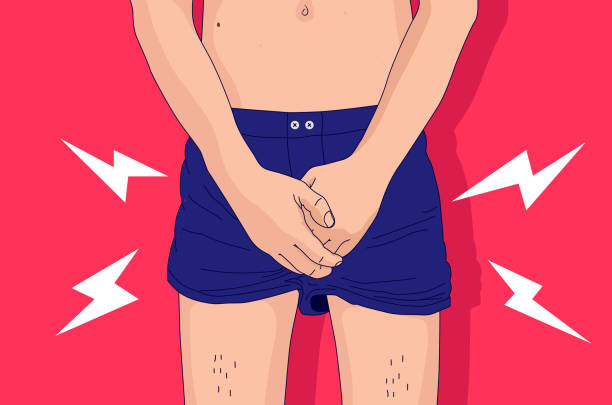Back
Understanding Urinary Urgency and Frequency in Males: The Role of the Pelvic Floor
By Dr. Christine Martirez PT, DPT on 8/2/2024

Urinary urgency and frequency are common issues that can significantly impact a man's quality of life. These conditions involve a sudden, strong need to urinate and an increased number of urination episodes throughout the day and night. While various factors can contribute to these symptoms, the state of the pelvic floor muscles often plays a crucial role. In this blog post, we will explore the anatomy of the pelvic floor in relation to urinary function, how a hypertonic (overly tight) pelvic floor can lead to urinary urgency and frequency, the interconnectedness of the pelvic floor with the hips and lower back, and how pelvic floor physical therapy (PFPT) can help.
Anatomy of the Pelvic Floor and Urinary Function
The pelvic floor is a group of muscles that form a sling-like support structure at the base of the pelvis. These muscles include the pubococcygeus, puborectalis, iliococcygeus, coccygeus, and obturator internus. They play a crucial role in supporting the pelvic organs, maintaining continence, and facilitating proper urinary function.
Key Functions of the Pelvic Floor Muscles in Urinary Control:
Supportive Function:
The pelvic floor muscles support the bladder and urethra, helping to maintain their proper position and function.
Sphincteric Function:
These muscles control the opening and closing of the urethral sphincter, aiding in the voluntary control of urine release.
Coordinated Contraction and Relaxation:
Proper urinary function relies on the coordinated contraction and relaxation of the pelvic floor muscles during bladder filling and emptying.
Hypertonic Pelvic Floor and Urinary Urgency/Frequency
A hypertonic pelvic floor, characterized by increased muscle tension and tightness, can disrupt normal urinary function in several ways:
Impaired Bladder Emptying:
Excessive tension in the pelvic floor muscles can hinder the complete relaxation necessary for bladder emptying, leading to a sensation of incomplete voiding and increased urinary frequency.
Increased Bladder Sensitivity:
Tight pelvic floor muscles can irritate the nerves that supply the bladder, increasing sensitivity and resulting in a heightened sense of urgency.
Urethral Compression:
A hypertonic pelvic floor can compress the urethra, making it difficult for urine to pass smoothly and causing urgency and frequency symptoms.
The Interconnectedness of Pelvic Health, Hips, and Low Back
The health and function of the pelvic floor are closely linked to the hips and lower back. Musculoskeletal issues in these areas can contribute to pelvic floor dysfunction:
Hip Mobility and Strength:
Restricted hip mobility or weakness can alter pelvic alignment and increase stress on the pelvic floor muscles, contributing to hypertonicity and urinary symptoms.
Lower Back Pain:
Lower back pain and muscle imbalances can affect the pelvic floor muscles' function due to shared neural pathways and fascial connections. This can lead to compensatory tightening of the pelvic floor muscles.
How Pelvic Floor Physical Therapy Can Help
Pelvic floor physical therapy offers a comprehensive approach to addressing urinary urgency and frequency by targeting the underlying causes of pelvic floor dysfunction:
Comprehensive Assessment:
Evaluation:
A pelvic floor physical therapist will conduct a thorough assessment, including a review of medical history, symptoms, and a physical examination to identify areas of muscle tension and dysfunction.
Personalized Treatment Plan:
Manual Therapy:
Techniques such as myofascial release, trigger point therapy, and soft tissue mobilization can help reduce pelvic floor muscle tension and improve overall function.
Pelvic Floor Exercises:
Guided exercises to promote relaxation and strengthening of the pelvic floor muscles, improving their ability to coordinate during bladder filling and emptying.
Hip and Low Back Interventions:
Exercises and techniques to improve hip mobility and strength, as well as address lower back issues, to reduce compensatory strain on the pelvic floor muscles.
Education and Lifestyle Modifications:
Postural Training:
Education on maintaining proper posture and body mechanics to reduce strain on the pelvic floor muscles and improve overall alignment.
Bladder Training:
Techniques to retrain the bladder and establish a more regular voiding schedule, reducing urgency and frequency symptoms.
Behavioral Modifications:
Guidance on lifestyle changes, such as fluid management and dietary adjustments, to support urinary health.
Urinary urgency and frequency in males can be distressing and disruptive, but understanding the role of the pelvic floor and its connection to the hips and lower back can provide valuable insights into managing these symptoms. A hypertonic pelvic floor can significantly impact urinary function, but pelvic floor physical therapy offers a holistic approach to addressing the underlying causes of dysfunction. Through comprehensive assessment, personalized treatment plans, and education, PFPT can help improve pelvic floor function, alleviate urinary symptoms, and enhance overall quality of life. If you are experiencing urinary urgency and frequency, consider consulting one of our pelvic floor physical therapists to develop a personalized plan that meets your unique needs and helps you achieve better pelvic health.
Read More:
How Chronic Pelvic Congestion in Men Contributes to Prostatitis By Shannon Strauch, PTA, STMT-1 on 12/11/2024 How lymphatic issues can cause symptoms of prostatitis Prostatitis and Tight Pelvic Floor Muscles: A Comprehensive Guide By Shannon Strauch, PTA, STMT-1 on 12/10/2024 How a tight pelvic floor can be the reason for prostatitis symptoms
Are you ready to live pain free?
Request An Appointment